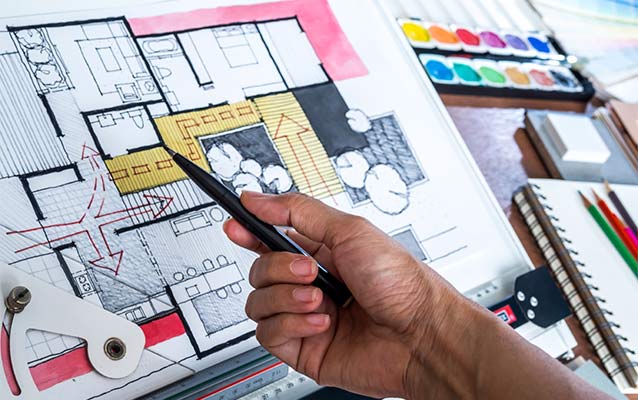Interior design is a multifaceted discipline that transforms ordinary spaces into extraordinary environments. While creativity plays a significant role, certain foundational principles ensure a space is not only beautiful but also functional and cohesive. By understanding and applying these principles, anyone can elevate the design of their home or workspace.
Key Principles of Interior Design
- Balance
- Balance refers to the distribution of visual weight within a space. It ensures a sense of stability and equilibrium. There are three types of balance:
- Symmetrical Balance: Mirrored arrangements, often used in traditional designs.
- Asymmetrical Balance: Uneven but visually balanced compositions, common in modern designs.
- Radial Balance: Elements arranged around a central focal point, such as a circular dining table.
- Balance refers to the distribution of visual weight within a space. It ensures a sense of stability and equilibrium. There are three types of balance:
- Harmony and Unity
- Harmony creates a sense of peace by ensuring all elements in a space work together seamlessly. Unity is achieved by using a consistent color scheme, material palette, or design style.
- Rhythm
- Rhythm guides the eye through a room by creating visual interest and movement. This can be achieved through repetition (repeating patterns or colors), progression (gradually increasing or decreasing sizes of elements), and contrast.
- Proportion and Scale
- Proportion relates to the size relationship between objects, while scale refers to the size of objects in relation to the room. Properly scaled furniture and decor ensure comfort and visual appeal.
- Emphasis
- Every room needs a focal point, whether it’s a fireplace, an eye-catching piece of art, or a large window. Emphasis ensures that this focal point draws attention and anchors the design.
- Contrast
- Contrast adds depth and interest by juxtaposing different elements, such as light and dark colors, smooth and rough textures, or modern and vintage furniture.
- Details
- The smallest details, like trim, hardware, and accessories, can make or break a design. Thoughtful attention to these elements ties a room together.
Applying Interior Design Principles
- Start with a Plan:
- Assess the space and identify its purpose. Create a mood board or sketch to visualize the design.
- Choose a Color Palette:
- Use the 60-30-10 rule: 60% dominant color, 30% secondary color, and 10% accent color.
- Layer Lighting:
- Incorporate ambient, task, and accent lighting to create a dynamic and functional space.
- Invest in Quality Furniture:
- Prioritize pieces that are both comfortable and durable. Properly sized furniture enhances the room’s functionality.
- Personalize Your Space:
- Add personal touches like family photos, travel souvenirs, or artwork to make the space uniquely yours.
Avoiding Common Design Mistakes
- Overcrowding: Avoid filling every inch of the space; leave room for movement and visual breathing space.
- Ignoring Lighting: Insufficient lighting can make even the best designs fall flat. Ensure multiple light sources are included.
- Neglecting Functionality: Design should prioritize how the space will be used, ensuring it meets practical needs.
Conclusion
Interior design principles provide the foundation for creating spaces that are both functional and visually captivating. By mastering these principles and combining them with personal creativity, anyone can craft environments that inspire and delight. Whether you’re designing a cozy bedroom, a productive office, or a lively living room, these guidelines will help you achieve a balance of beauty and utility.
